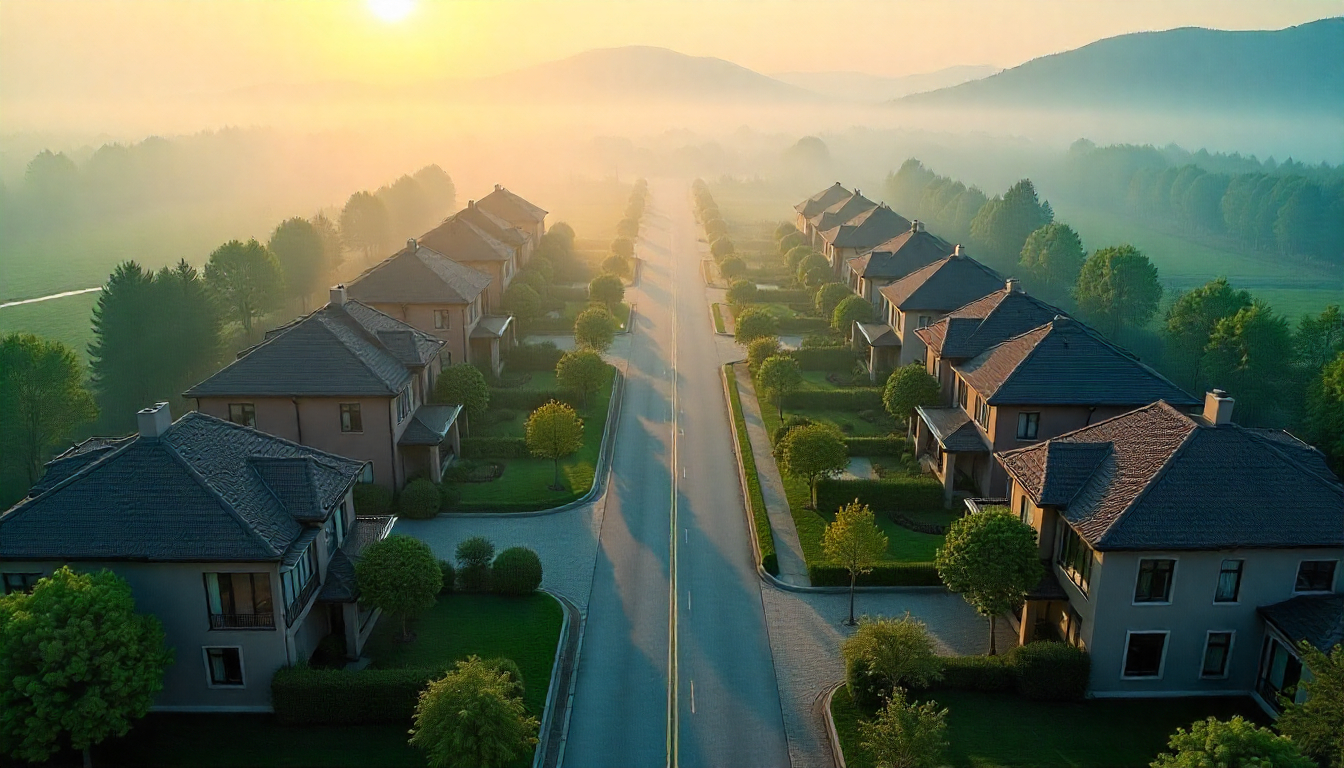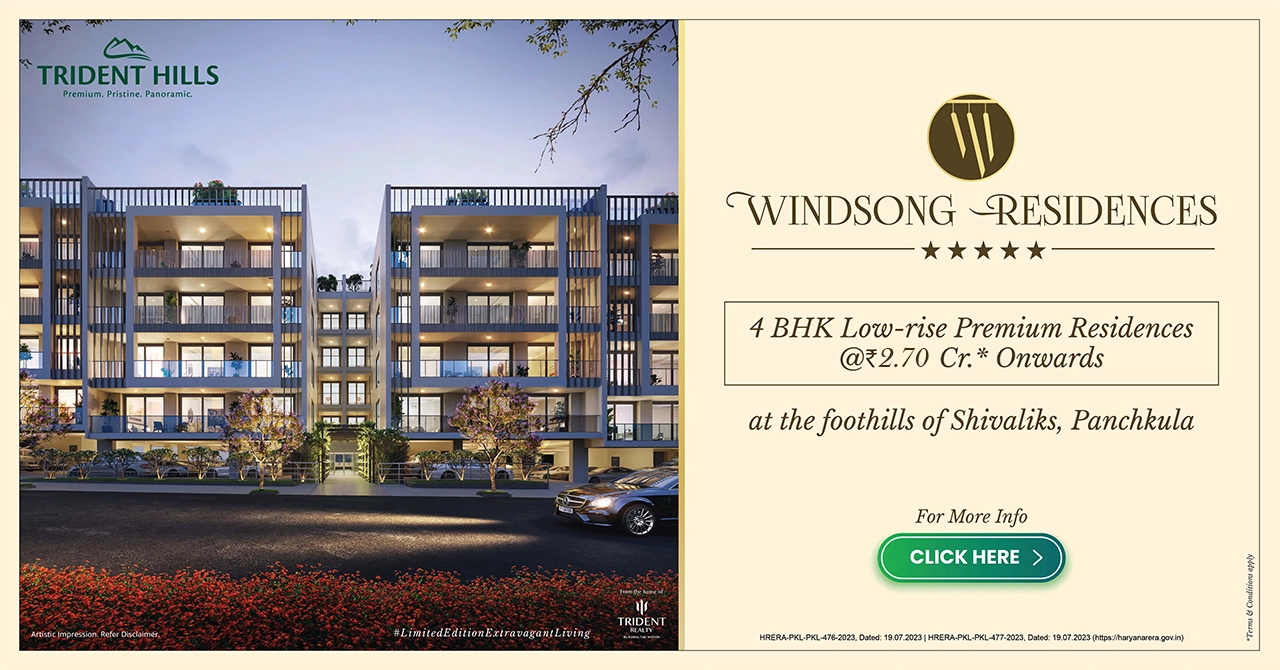
Luxury Housing Trends 2025 and Where India’s Residential Market Is Headed
Imagine the globally mobile Indian professional—someone accustomed to the finest residences in London, Dubai, or Singapore. When they choose to invest back home, their expectations aren't merely high; they are global. This discerning, internationally experienced buyer is the driving force behind India’s soaring luxury real estate market. In 2025, this segment is moving decisively beyond basic 'opulence,' prioritising assets that guarantee two things: experiential excellence and environmental stewardship. This demand, backed by surging HNI wealth and substantial NRI investment, is accelerating the premiumisation of the entire residential sector. For forward-thinking developers, this is an invitation to innovate.
This blog delves into the forces driving luxury housing in 2025, what buyers now desire, and how Trident Realty’s upcoming and existing projects align with these shifts.
The Shifting Face of Luxury Housing in India: Beyond the Billionaire’s Row
The desire for a premium home in India is less about showing status and more about securing a sanctuary. The post-pandemic world cemented the home’s role as an all-encompassing hub—an office, a wellness centre, a school, and an entertainment zone. This has fundamentally rewired the luxury buyer's psyche, moving the focus from transactional real estate to experiential living.
The market is currently experiencing an unprecedented bifurcation: while the affordable segment is struggling, the luxury segment is booming. This growth is a clear reflection of India’s increasingly affluent, globally exposed demographic.
Market Overview 2025: Data Points Defining the Boom
The numbers for the first half of 2025 paint a vivid picture of this premiumisation wave.
According to a JLL report, premium homes (priced above ₹1 crore) have unequivocally dominated sales, capturing a massive 62% market share of all residential sales in the first half of 2025—a significant jump from 51% in the preceding year.
The engine room of this growth lies in the higher-ticket segments:
Sales of homes in the ₹3-5 crore segment saw a robust 14% annual growth in demand.
The ultra-luxury segment (₹5 crore and above) experienced a phenomenal 80% year-on-year increase in sales in the preceding year, clearly demonstrating the affluent class's readiness to invest heavily in quality.
Furthermore, price appreciation is not slowing down. While property values climbed across all major Indian cities, Delhi NCR recorded the highest year-on-year price growth at 17%, followed closely by Bengaluru at 14% [Source Placeholder: The Times of India, Premium housing market cornered 62% market share in 2025]. This widespread growth underscores a stable, high-demand market, bolstering investor confidence in the long-term capital value of luxury assets.
This market is fundamentally being driven by four synergistic trends that define the future of high-end residential real estate.
Key Luxury Housing Trends Shaping 2025
1. The Premiumisation of Lifestyle and Design
True luxury has evolved from marble floors and chandeliers to an emphasis on holistic, effortless living. Buyers are demanding an integrated ecosystem that reflects global design sensibilities.
Branded Residences: Partnerships with international hospitality, design, or fashion houses are gaining traction, appealing to the desire for exclusivity and guaranteed quality control that such global brands promise.
Customisation and Personalisation: Affluent buyers seek bespoke spaces—private art galleries, gourmet kitchens, spa-inspired bathrooms, and personal home gyms—that mirror their unique tastes and lifestyles. As a Sotheby’s report suggests, a significant portion of luxury buyers now prioritise customised wellness spaces. [Source Placeholder: India Sotheby's International Realty, Luxury Outlook Report].
Technology Integration: The ‘smart home’ is no longer a gadget-laden novelty; it is a seamlessly integrated ecosystem. Buyers expect AI-driven security, voice-controlled environmental systems (such as HVAC and lighting), and sophisticated IoT platforms that manage energy efficiency and protection with minimal effort.
2. Bigger Homes and the Rise of Multi-Purpose Spaces
The most enduring trend birthed by the pandemic is the uncompromising demand for space. Luxury buyers are increasingly opting for sprawling layouts, low-density living, and dedicated zones that cater to a multifaceted lifestyle.
The home must now effectively incorporate:
Dedicated Home Offices/Libraries: Proper, soundproof spaces are essential for remote work and global connectivity.
Wellness and Leisure Zones: Personal yoga decks, meditation pavilions, and entertainment areas for family and guests, all within the home’s immediate footprint.
Low-Density Layouts: A strong preference for villas, independent floors, and townhouses, or low-rise apartments within sprawling townships, where the ratio of built-up space to green, open area is generously tilted towards nature. This addresses the deep-seated desire for privacy and freedom from urban congestion.
3. Sustainability and the Green Living Mandate
Environmental, Social, and Governance (ESG) considerations are no longer a corporate mandate, but a necessity. Affluent buyers, particularly younger HNIs and NRIs, view sustainability not as a compromise but as an indicator of an intelligent, future-proof, and premium asset.
India’s green building market is projected to reach USD 39 billion by 2025, demonstrating the scale of this shift.
Luxury buyers are actively looking for:
Green Certifications: Projects with IGBC (Indian Green Building Council) or GRIHA certifications are highly favoured, ensuring the use of resource-efficient materials and construction practices.
Resource Management: Sophisticated rainwater harvesting systems, solar energy generation (for common areas or individual homes), and advanced sewage treatment plants (STPs) for water recycling are now expected as standard features.
Biophilic Design: Integration of nature into the architecture—vertical gardens, expansive balconies, and natural light maximisation—to promote well-being and air quality.
4. The Rise of Luxury Demand in Tier-2 Cities
A monumental shift in the Indian real estate narrative is the decentralisation of luxury from just the metro hubs. Tier-2 and Tier-3 cities are emerging as strong luxury contenders, driven by:
Infrastructure Investment: The Government's push for high-speed corridors, new airports, and metro extensions has drastically improved connectivity, making satellite cities viable for business and residence.
Affordability of Space: Buyers can acquire significantly larger, low-density luxury homes in these cities for the price of a mid-range apartment in a metro.
Return to Roots: The ‘work-from-anywhere’ culture, alongside the desire for a tranquil life closer to one’s family origins, has led to a significant influx of demand, particularly from NRIs.
Tier-2 cities, led by Coimbatore, Lucknow, and the Tri-city area (comprising Chandigarh, Mohali, and Panchkula), are witnessing rapid price appreciation. Sales value in the top 15 Tier-2 cities surged by 20% in 2024, underscoring their maturity as luxury investment destinations.
How’s Trident Realty Leading the Luxury Arc
Amidst these transformative shifts, developers with a philosophical approach to construction, rather than just a commercial one, are taking the lead.
Trident Realty’s design and development philosophy aligns seamlessly with the four defining trends of 2025, positioning its projects as benchmarks for holistic, future-ready luxury. Buyers can access significantly larger, low-density luxury homes in emerging cities—often at a similar price point to a mid-range metro apartment.
Embracing Premiumisation and Bigger Living
Trident’s approach moves beyond amenity checklists to focus on low-density master planning. Its projects are deliberately designed to ensure residents enjoy open, breathable spaces rather than being stacked in towering high-rises.
Design Philosophy: The firm champions a design-led, human-centric approach, evidenced by its Vastu-aligned architecture. This caters directly to the Indian luxury buyer's desire for a home that is not only opulent but also spiritually and culturally grounded.
Spacious Ecosystems: Rather than maximising FSI (Floor Space Index), Trident prioritises expansive green zones, ensuring a seamless integration of indoor luxury with outdoor tranquillity, thereby addressing the crucial demand for bigger homes and multipurpose spaces.
Pioneering Sustainability and Nature Integration
For Trident, sustainability is a foundational ethos, not an optional add-on. The firm’s projects are intrinsically linked to the growing mandate for green living.
Embedded Sustainability: Trident incorporates features such as solar lighting, rainwater harvesting, and innovative waste management from the ground up, ensuring a reduced environmental footprint and lower long-term operational costs—a dual benefit that appeals to both the environmentally conscious and financially savvy HNI.
Holistic Zoning: The company develops projects as microcosms of wellness. Features like dedicated Wellness Clusters (yoga decks, meditation pavilions) and the strategic use of green corridors for natural cooling and biodiversity are concrete manifestations of the Biophilic Design trend, creating demonstrably healthier homes.
Leading the Tier-2 Luxury Charge
Trident Realty's commitment to the new luxury is best exemplified by its focus on emerging high-potential markets, such as the Tri-city area (Panchkula).
The firm recognised early that these strategically located areas—with their superior air quality, lower congestion, and proximity to major metro hubs—would become the new hotspots for affluent living. By developing low-density, premium residential ecosystems in places like Panchkula, Trident is directly capitalising on and driving the luxury demand in Tier-2 cities, offering an elevated standard of living that metro projects struggle to match in terms of space and tranquillity. This strategy demonstrates foresight and an understanding of the evolving geographic preferences of the Indian buyer.
Future Outlook: The Next Decade of Luxury
Looking ahead five to ten years, the trajectory of India's luxury housing market is set to remain steep. The sector, projected to reach $1 trillion by 2030, will be defined by:
Hyper-Personalisation: AI and machine learning will move beyond mere automation, enabling homes to dynamically adapt to the resident's habits, mood, and circadian rhythms—truly making the home an 'intelligent servant'.
Wellness Certification: Beyond green building standards, homes will increasingly seek wellness certifications (like WELL Building Standard) to prove measurable metrics of air quality, light quality, and sound control.
Fractional and Flexible Ownership: High-value assets, such as luxury second homes in destinations like Goa or the hills, will see a rise in fractional ownership models, democratising access to the ultra-premium lifestyle for a broader HNI base.
Conclusion: Investing in the ‘Quality of Life’ Index
The luxury residential market in India is in a robust period of correction and aspiration. It is moving away from purely speculative investment toward a focus on what truly matters: quality of life. The future of this segment lies not just in the capital value of the asset but in the experiential return it offers the resident.
Developers like Trident Realty, who have proactively woven concepts such as sustainability, expansive living, and human-centric design into the very fabric of their projects, are not just building houses; they are curating the lifestyle of tomorrow’s elite Indian families. For the savvy buyer, the investment thesis is clear: the future belongs to homes that offer a sanctuary from the urban rush, a hub for holistic wellness, and a conscious commitment to the planet. This blend of luxury and responsibility is the defining feature of India’s residential market as it heads into 2025 and beyond.
Sources -









